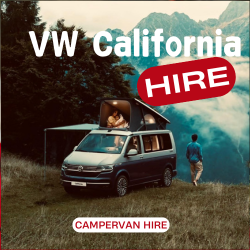You are using an out of date browser. It may not display this or other websites correctly.
You should upgrade or use an alternative browser.
You should upgrade or use an alternative browser.
briwy
Super Poster
VIP Member
I would say that's reasonable but you really should not rely on the warning light. Check regularly using the dipstick.
WelshGas
Retired after 42 yrs and enjoying Life.
Super Poster
Lifetime VIP Member
Sounds OK. Despite what some might say engines use oil, especially new engines until the carbon layer builds up. Also, what was the level to start with? Long distance high speed travel will use more than short low speed.Hi,
We have a new 2017 - 204 dsg with +/- 8000 miles (13000km) .
Yesterday we had a dashboard waring to check the oil level and had to add 0.5L
Is this normal?
If the oil light came on I would suspect you need more than 0.5L to bring it upto the mark.
Most car manufacturers quote oil consumption of 1L per 1000 + miles as normal.
Spartan
(not human)
This post would also suggest that it is not unusual for T6:
However, I would have thought that if the oil level warning light has come on, you might need to add more than 0.5l to get back up to 'full'? Best to check your handbook.
I have been monitoring the oil level in my MY17 T6 Ocean and after 6000 miles it's slightly below the middle of the range of the dipstick. As a small oil bottle is supplied with the van, decided to put a little bit in.
Charles
However, I would have thought that if the oil level warning light has come on, you might need to add more than 0.5l to get back up to 'full'? Best to check your handbook.
Ciki62
YES. Same with my 204 t6. After cca 8000 km 1l then 16000km oil change and now 32000 km next oil change. 
Sent from my iPhone using Tapatalk

Sent from my iPhone using Tapatalk
Ciki62
And yes when light  came on cca 1l of oil is required.
came on cca 1l of oil is required.
Sent from my iPhone using Tapatalk
 came on cca 1l of oil is required.
came on cca 1l of oil is required. Sent from my iPhone using Tapatalk
T
Trebor
Guest User
Not put any in mine . Dip regularly . 15 k miles now . One service .
WelshGas
Retired after 42 yrs and enjoying Life.
Super Poster
Lifetime VIP Member
Would be helpful to update your vehicle details as the original post and subsequent answers have been about the T6 204.Not put any in mine . Dip regularly . 15 k miles now . One service .
T
Trebor
Guest User
Welshgas details are correct . I respect your excellent well balanced posts but should a t6 204 use more oil than a t5 180 ? I know that they are different engines but is that relevant ?
Had many cars over the years from 5 Saab’s including turbos to 4 110 Landrovers , diesel and V8 ,Range Rovers diesel and V8 and others Never needed to put anything more than a 1/4 pint max oil in them very rarely and checked levels and serviced regularly .
Oh and the best was the last a Landcruiser Amazon 4.2 diesel which had done 270 k when I sold it . Didn’t use any oil between services and no oil leaks . Always used Mobil 1 in turbos or the maker’s recommended oil .
Interestingly I was offered 2 types of oil at my Vw service . I paid for the dearer which was Mobil 1 . What’s all that about ?
Had many cars over the years from 5 Saab’s including turbos to 4 110 Landrovers , diesel and V8 ,Range Rovers diesel and V8 and others Never needed to put anything more than a 1/4 pint max oil in them very rarely and checked levels and serviced regularly .
Oh and the best was the last a Landcruiser Amazon 4.2 diesel which had done 270 k when I sold it . Didn’t use any oil between services and no oil leaks . Always used Mobil 1 in turbos or the maker’s recommended oil .
Interestingly I was offered 2 types of oil at my Vw service . I paid for the dearer which was Mobil 1 . What’s all that about ?
Last edited by a moderator:
Ocean Spirit
Eating Ice Cream, skimming stones.
Super Poster
Trebor, I know this post was direct more towards WG giving you an answer but if they are different engines its absolutely relevant.I respect your excellent well balanced posts but should a t6 204 use more oil than a t5 180 ? I know that they are different engines but is that relevant ?
I'm not particularly an expert but I reckon..
Your older cars not using much is a familiar story and oil consumption on cars of previous decades that did use oil were almost definitely associated with damage, wear or leaks. These days it seems a lot of engines consume more and amongst a number of factors that I couldn't explain a combination of design and manufacturing tolerances will effect things. Not saying tolerances will have increased but the more complex engines are these days, the more ways there are for some to oil to find its way to get combusted. Some usage is not a bad thing of course.
T
Trebor
Guest User
Thanks for that 2020 . As you say seems to be the case these days with modern engines and emissions controls but mine is 2015 ( better not speak too soon ).
So if all this oil is going up in smoke what does that say about air pollution and where does that leave emission controls ? A bit like speed humps which they seem to have finally realised about 20 years late cause big increase in air pollution .
So if all this oil is going up in smoke what does that say about air pollution and where does that leave emission controls ? A bit like speed humps which they seem to have finally realised about 20 years late cause big increase in air pollution .
Ocean Spirit
Eating Ice Cream, skimming stones.
Super Poster
Emission controls?
Another subject on it's own except to say as far as we know VW comply .
.
After manufacture there's not much can be done really I'd have thought.
I appreciate this is now going off topic but as an example..
but as an example..
I picked up my daughter from school back in August one day (I don't get to do it that often) and it wasn't a hot day and it certainly was OK to wear a T shirt though.
So as I stood outside the school gates with my dog, no fewer than 3 mums pulled up 5 minutes or more early in biggish cars and sat there with their engines running. I recognised one of them to live less than 1/2 a mile away but all 3 sat blissfully ignorant and all 3 were texting away.
For me it was an 'oh my god' moment that people either don't care or don't realise the consequence of what they do in a world where we are consumed by some form of hand set..twitter, face book etc. I too have a phone but never strike up social messaging. I'm a 2 texts a day man. One thing at a time and they just might have thought to turn off their engines.
Another subject on it's own except to say as far as we know VW comply
 .
.After manufacture there's not much can be done really I'd have thought.
I appreciate this is now going off topic
 but as an example..
but as an example..I picked up my daughter from school back in August one day (I don't get to do it that often) and it wasn't a hot day and it certainly was OK to wear a T shirt though.
So as I stood outside the school gates with my dog, no fewer than 3 mums pulled up 5 minutes or more early in biggish cars and sat there with their engines running. I recognised one of them to live less than 1/2 a mile away but all 3 sat blissfully ignorant and all 3 were texting away.
For me it was an 'oh my god' moment that people either don't care or don't realise the consequence of what they do in a world where we are consumed by some form of hand set..twitter, face book etc. I too have a phone but never strike up social messaging. I'm a 2 texts a day man. One thing at a time and they just might have thought to turn off their engines.
WelshGas
Retired after 42 yrs and enjoying Life.
Super Poster
Lifetime VIP Member
I have yet to come across a modern engine used for long distance journeys that didn’t use oil to some extent. I use a grand total of 1L / 20,000 miles. And I am about to have my 3 rd Service at 60,000.Welshgas details are correct . Should a t6 204 use more oil than a t5 180 ? I know that they are different engines but is that relevant ? Had many cars over the years from 5 Saab’s to 4 110 Landrovers , diesel and V8 ,Range Rovers diesel and V8 . Never needed to put oil in them and checked and serviced regularly .
Also, modern oils especially the semi or fully synthetic oils are a different animal to those used in the past.
WelshGas
Retired after 42 yrs and enjoying Life.
Super Poster
Lifetime VIP Member
The worst car for oil consumption was a Mazda RX8. 1 litre for every 1000 miles and the sump only held 2.5 litres. £20 / litre and only available from Mazda. Totally different engine and totally different oil. But what a drive.
T
Trebor
Guest User
Emission controls?
Another subject on it's own except to say as far as we know VW comply.
After manufacture there's not much can be done really I'd have thought.
I appreciate this is now going off topicbut as an example..
I picked up my daughter from school back in August one day (I don't get to do it that often) and it wasn't a hot day and it certainly was OK to wear a T shirt though.
So as I stood outside the school gates with my dog, no fewer than 3 mums pulled up 5 minutes or more early in biggish cars and sat there with their engines running. I recognised one of them to live less than 1/2 a mile away but all 3 sat blissfully ignorant and all 3 were texting away.
For me it was an 'oh my god' moment that people either don't care or don't realise the consequence of what they do in a world where we are consumed by some form of hand set..twitter, face book etc. I too have a phone but never strike up social messaging. I'm a 2 texts a day man. One thing at a time and they just might have thought to turn off their engines.
Amazing ! What world are they living in ? I’m sure it’s going on all over Uk . I do 2 text a day as well . Must be a bloke thing ....
T
Trebor
Guest User
The worst car for oil consumption was a Mazda RX8. 1 litre for every 1000 miles and the sump only held 2.5 litres. £20 / litre and only available from Mazda. Totally different engine and totally different oil. But what a drive.
Yes I had a friend with Rx8 . I nearly bought one until he told me about the oil consumption.
T
Trebor
Guest User
The worst car for oil consumption was a Mazda RX8. 1 litre for every 1000 miles and the sump only held 2.5 litres. £20 / litre and only available from Mazda. Totally different engine and totally different oil. But what a drive.
WelshGas . Does anyone know what type of oil is put in t6 in factory ? What are the two different oils being offered at main agents for servicing ?
WelshGas
Retired after 42 yrs and enjoying Life.
Super Poster
Lifetime VIP Member
This might be the info you want.WelshGas . Does anyone know what type of oil is put in t6 in factory ? What are the two different oils being offered at main agents for servicing ?
http://www.realoem.me/Volkswagen/RDW/CAMP/2017/871/R/1/100/100098
Seems there could be 2 oils, 0w30 and 5w40
Ocean Spirit
Eating Ice Cream, skimming stones.
Super Poster
Long life acording to this but beware it's a 2007 article.
How advanced engineering and oil has changed the way your Volkswagen is serviced.
LongLife Service regimes
The LongLife Service regime is so called because there are no set service intervals and, depending on how you drive your vehicle, and the conditions of use, a service will be required anywhere between 9,000 miles or 12 months (whichever occurs first), up to a maximum of 20,000* miles or 24 months (whichever occurs first).
This LongLife service regime has been made possible due to the development of new Volkswagen engines with the latest technically advanced LongLife oil. These engines use built-in sensors that continually monitor the oil quality, making it possible to enjoy reliable and confident motoring for up to a maximum of 20,000* miles or 24 months (whichever occurs first).
*Please consult your Volkswagen Retailer or repairer for full information.
It’s your choice
All new Volkswagen cars (except Fox) are now manufactured with the LongLife Service regime activated and the engine filled with Castrol LongLife oil. However, your car is also capable of being serviced at a more traditional time of 12 months or 10,000 miles (which ever occurs first), this regime is known as Time and Distance. Your Retailer will explain both systems and can reset your car to the Time and Distance regime at the Pre Delivery Inspection if you wish. Whichever regime you choose, the vehicle dashboard service indicator will remind you when the service is due. With the LongLife service regime it could be anywhere between 9,000 miles or 12 months up to a maximum of 20,000* miles or 24 months, depending on the way the car is driven and/or its operating environment. The Time and Distance regime will be around 10,000 miles or 12 months (which ever occurs first).
What LongLife Servicing can mean to you
Is the LongLife regime more expensive than the more traditional Time and Distance regime?
No, the basic service cost hasn’t changed, but because you need fewer services, you will save money. However, LongLife oil is more expensive than conventional oil. So, if you choose the LongLife regime, there will be a corresponding increase in the cost of the oil replaced during a service. Importantly this increased cost must be seen in context. Over a period, the reduced number of services means that the cost of ownership nearly always comes down. Your Retailer has a calculation that can illustrate the likely savings you will make on both the maintenance of your vehicle and the fuel bill.
What is LongLife III oil?
LongLife oil is a high grade, fully synthetic oil with increased resistance to ageing at high temperatures. When LongLife servicing was originally introduced it was generally designated SAE 0W-30 and met Volkswagen standards 503 00 for petrol engines and 506 00 and later 506 01 for diesel engines. With the introduction of new emission limits for passenger cars in 2005 requiring the fitment of exhaust gas after- treatment devices, Volkswagen have upgraded their LongLife specifications to 504 00 for petrol and 507 00 for diesel. LongLife oils meeting 504 00/507 00 are now SAE 5W-30 viscosity. Apart from a few exceptions*, these new specifications replace the earlier 503 00/506 00/506 01 specifications. Oils meeting the new specifications are designed to work with the latest emissions control equipment, such as diesel particulate filters (DPF). Use of oil which only meets earlier LongLife specifications can halve the life of a DPF.
*All diesel vehicles fitted with R5 (5 cylinder) and 5.0ltr V10 engines and manufactured prior to 1 January 2006, cannot use oils meeting Volkswagen standard 507 00 even if equipped with a DPF. These engines should use oils meeting Volkswagen standard 506 01 (eg. Castrol Professional Longtec LongLife II 0W-30) for both LongLife and Time and Distance servicing regimes.
Important note
In order to maximise the life of the DPF, all DPF equipped Volkswagen vehicles (except pre 2006 R5 and V10 engines) must use an engine oil meeting the new 507 00 specification even when on Time and Distance servicing regime.
Do I have to use LongLife oil all the time?
Yes. If you want to take advantage of the LongLife service regime. Please note that if the engine is topped up with more than 1⁄2 litre of non-LongLife oil between services, the service indicator will come on earlier and the time or distance between services will be reduced.
Can I really save money on my fuel bill?
Yes. Extensive tests carried out by Volkswagen have demonstrated that Castrol SLX Professional Powerflow LongLife III provides improved fuel economy - equivalent to 10 miles extra per tank on the Volkswagen Passat 2.0 FSI (UK spec) compared to a 15W-40 viscosity oil.
If I am on the LongLife service regime, I might not have my car serviced for up to 2 years; will this affect my warranty?
No. The warranty covers against defects of manufacture. However, if a component fails due to your car not being serviced to the Volkswagen recommendations, then this is not covered by the warranty.
I am concerned that my car can be used on the road for 2 years without any safety checks.
Many components are far longer lasting than they used to be. The front brake pads are electronically monitored, as is the engine oil level. The battery is maintenance free. Tyres are the most vulnerable item and you have an obligation to check these on a regular basis.
The instruction manual explains that the service indicator can be reset via the trip display button.
This is correct. However, if this resetting method is used, the service regime will automatically change to Time and Distance (Selected models only).
I am not sure which service regime is best for me.
The choice or regime can be dependent on how the car is driven and the conditions of use, It is impossible to state any hard and fast rules. However, if you are not sure, Volkswagen recommends that your car be set to the factories default of the LongLife regime. The service indicator will tell you when the first service is due. Your Volkswagen Retailer or repairer will then discuss the best regime suitable for you to adopt. To help you identify which regime may be best for you, please refer to the following guidance.
LongLife Regime.
To obtain the most benefit from the LongLife service regime, the car should to be generally driven in a style/condition of use listed below:
How advanced engineering and oil has changed the way your Volkswagen is serviced.
LongLife Service regimes
The LongLife Service regime is so called because there are no set service intervals and, depending on how you drive your vehicle, and the conditions of use, a service will be required anywhere between 9,000 miles or 12 months (whichever occurs first), up to a maximum of 20,000* miles or 24 months (whichever occurs first).
This LongLife service regime has been made possible due to the development of new Volkswagen engines with the latest technically advanced LongLife oil. These engines use built-in sensors that continually monitor the oil quality, making it possible to enjoy reliable and confident motoring for up to a maximum of 20,000* miles or 24 months (whichever occurs first).
*Please consult your Volkswagen Retailer or repairer for full information.
It’s your choice
All new Volkswagen cars (except Fox) are now manufactured with the LongLife Service regime activated and the engine filled with Castrol LongLife oil. However, your car is also capable of being serviced at a more traditional time of 12 months or 10,000 miles (which ever occurs first), this regime is known as Time and Distance. Your Retailer will explain both systems and can reset your car to the Time and Distance regime at the Pre Delivery Inspection if you wish. Whichever regime you choose, the vehicle dashboard service indicator will remind you when the service is due. With the LongLife service regime it could be anywhere between 9,000 miles or 12 months up to a maximum of 20,000* miles or 24 months, depending on the way the car is driven and/or its operating environment. The Time and Distance regime will be around 10,000 miles or 12 months (which ever occurs first).
What LongLife Servicing can mean to you
- Fewer visits to your Retailers or repairer’s workshop.
- Lower lifetime service costs.
- Less oil to dispose of, an environmental benefit.
- Fuel saving.
Your Retailer will have a calculation available that can illustrate the likely savings you will make on both the maintenance of your vehicle and the fuel bill using either the LongLife or Time and Distance regimes.
Castrol SLX Professional Powerflow LongLife III engine oil
Castrol SLX Professional Powerflow LongLife III has been co-engineered with Volkswagen and uses Clean Performance TechnologyTM to give you a low level of emissions resulting in a clean car and clean air. The combination of Castrol oil and the Volkswagen Diesel Particulate Filter (DPF) reduces ash deposits by up to 50% when compared to some other fully synthetic engine oils, thereby helping to prolong the life of the filter.
Castrol SLX Professional Powerflow LongLife III top up kits
In the event that you need to top up the engine oil between services Castrol have a Check It Kit containing:- 1 litre of Castrol SLX Professional Powerflow LongLife III.
- Dip stick wipe.
- Disposable gloves.
- Disposable funnel.
- Contained in a black vinyl case attachable to the luggage compartment lining. So now you can easily check your oil level and ensure that the correct oil is used These kits are available from your Volkswagen Retailer.
- 1 litre of Castrol SLX Professional Powerflow LongLife III.
Is the LongLife regime more expensive than the more traditional Time and Distance regime?
No, the basic service cost hasn’t changed, but because you need fewer services, you will save money. However, LongLife oil is more expensive than conventional oil. So, if you choose the LongLife regime, there will be a corresponding increase in the cost of the oil replaced during a service. Importantly this increased cost must be seen in context. Over a period, the reduced number of services means that the cost of ownership nearly always comes down. Your Retailer has a calculation that can illustrate the likely savings you will make on both the maintenance of your vehicle and the fuel bill.
What is LongLife III oil?
LongLife oil is a high grade, fully synthetic oil with increased resistance to ageing at high temperatures. When LongLife servicing was originally introduced it was generally designated SAE 0W-30 and met Volkswagen standards 503 00 for petrol engines and 506 00 and later 506 01 for diesel engines. With the introduction of new emission limits for passenger cars in 2005 requiring the fitment of exhaust gas after- treatment devices, Volkswagen have upgraded their LongLife specifications to 504 00 for petrol and 507 00 for diesel. LongLife oils meeting 504 00/507 00 are now SAE 5W-30 viscosity. Apart from a few exceptions*, these new specifications replace the earlier 503 00/506 00/506 01 specifications. Oils meeting the new specifications are designed to work with the latest emissions control equipment, such as diesel particulate filters (DPF). Use of oil which only meets earlier LongLife specifications can halve the life of a DPF.
*All diesel vehicles fitted with R5 (5 cylinder) and 5.0ltr V10 engines and manufactured prior to 1 January 2006, cannot use oils meeting Volkswagen standard 507 00 even if equipped with a DPF. These engines should use oils meeting Volkswagen standard 506 01 (eg. Castrol Professional Longtec LongLife II 0W-30) for both LongLife and Time and Distance servicing regimes.
Important note
In order to maximise the life of the DPF, all DPF equipped Volkswagen vehicles (except pre 2006 R5 and V10 engines) must use an engine oil meeting the new 507 00 specification even when on Time and Distance servicing regime.
Do I have to use LongLife oil all the time?
Yes. If you want to take advantage of the LongLife service regime. Please note that if the engine is topped up with more than 1⁄2 litre of non-LongLife oil between services, the service indicator will come on earlier and the time or distance between services will be reduced.
Can I really save money on my fuel bill?
Yes. Extensive tests carried out by Volkswagen have demonstrated that Castrol SLX Professional Powerflow LongLife III provides improved fuel economy - equivalent to 10 miles extra per tank on the Volkswagen Passat 2.0 FSI (UK spec) compared to a 15W-40 viscosity oil.
If I am on the LongLife service regime, I might not have my car serviced for up to 2 years; will this affect my warranty?
No. The warranty covers against defects of manufacture. However, if a component fails due to your car not being serviced to the Volkswagen recommendations, then this is not covered by the warranty.
I am concerned that my car can be used on the road for 2 years without any safety checks.
Many components are far longer lasting than they used to be. The front brake pads are electronically monitored, as is the engine oil level. The battery is maintenance free. Tyres are the most vulnerable item and you have an obligation to check these on a regular basis.
The instruction manual explains that the service indicator can be reset via the trip display button.
This is correct. However, if this resetting method is used, the service regime will automatically change to Time and Distance (Selected models only).
I am not sure which service regime is best for me.
The choice or regime can be dependent on how the car is driven and the conditions of use, It is impossible to state any hard and fast rules. However, if you are not sure, Volkswagen recommends that your car be set to the factories default of the LongLife regime. The service indicator will tell you when the first service is due. Your Volkswagen Retailer or repairer will then discuss the best regime suitable for you to adopt. To help you identify which regime may be best for you, please refer to the following guidance.
LongLife Regime.
To obtain the most benefit from the LongLife service regime, the car should to be generally driven in a style/condition of use listed below:
- Mainly longer distance journeys
- Limited number of cold starts, engine is kept at operating temperature over a
longer period of time.
- Daily mileage above approx. 25 miles.
- Constant speed.
- Vehicle used regularly.
Time/Distance Regime.
It your car is driven in a style if listed below, it may be more appropriate to opt for the Time and Distance regime- Extremely uneconomical driving style ie continual maximum acceleration ie. ‘foot to
floor’.
- Vehicle fully loaded.
- Mainly short journeys.
- Frequent cold starts.
- Frequent hill climbs.
- Frequent towing.
- City centre driving.
For further information concerning the servicing regimes, please consult your Volkswagen Retailer or repairer for full details.
Please note
All mileage stated is an approximate guide as the service indicator system uses kilometres as the distance measurement.
Last updated September 2007.
- Extremely uneconomical driving style ie continual maximum acceleration ie. ‘foot to
WelshGas
Retired after 42 yrs and enjoying Life.
Super Poster
Lifetime VIP Member
I note that VW also recommend a Top Up Kit by Castrol, so they expect some owners to have to top up between services.Long life acording to this but beware it's a 2007 article.
How advanced engineering and oil has changed the way your Volkswagen is serviced.
LongLife Service regimes
The LongLife Service regime is so called because there are no set service intervals and, depending on how you drive your vehicle, and the conditions of use, a service will be required anywhere between 9,000 miles or 12 months (whichever occurs first), up to a maximum of 20,000* miles or 24 months (whichever occurs first).
This LongLife service regime has been made possible due to the development of new Volkswagen engines with the latest technically advanced LongLife oil. These engines use built-in sensors that continually monitor the oil quality, making it possible to enjoy reliable and confident motoring for up to a maximum of 20,000* miles or 24 months (whichever occurs first).
*Please consult your Volkswagen Retailer or repairer for full information.
It’s your choice
All new Volkswagen cars (except Fox) are now manufactured with the LongLife Service regime activated and the engine filled with Castrol LongLife oil. However, your car is also capable of being serviced at a more traditional time of 12 months or 10,000 miles (which ever occurs first), this regime is known as Time and Distance. Your Retailer will explain both systems and can reset your car to the Time and Distance regime at the Pre Delivery Inspection if you wish. Whichever regime you choose, the vehicle dashboard service indicator will remind you when the service is due. With the LongLife service regime it could be anywhere between 9,000 miles or 12 months up to a maximum of 20,000* miles or 24 months, depending on the way the car is driven and/or its operating environment. The Time and Distance regime will be around 10,000 miles or 12 months (which ever occurs first).
What LongLife Servicing can mean to you
Answers to the most frequently asked questions
- Fewer visits to your Retailers or repairer’s workshop.
- Lower lifetime service costs.
- Less oil to dispose of, an environmental benefit.
- Fuel saving.
Your Retailer will have a calculation available that can illustrate the likely savings you will make on both the maintenance of your vehicle and the fuel bill using either the LongLife or Time and Distance regimes.
Castrol SLX Professional Powerflow LongLife III engine oil
Castrol SLX Professional Powerflow LongLife III has been co-engineered with Volkswagen and uses Clean Performance TechnologyTM to give you a low level of emissions resulting in a clean car and clean air. The combination of Castrol oil and the Volkswagen Diesel Particulate Filter (DPF) reduces ash deposits by up to 50% when compared to some other fully synthetic engine oils, thereby helping to prolong the life of the filter.
Castrol SLX Professional Powerflow LongLife III top up kits
In the event that you need to top up the engine oil between services Castrol have a Check It Kit containing:
- 1 litre of Castrol SLX Professional Powerflow LongLife III.
- Dip stick wipe.
- Disposable gloves.
- Disposable funnel.
- Contained in a black vinyl case attachable to the luggage compartment lining. So now you can easily check your oil level and ensure that the correct oil is used These kits are available from your Volkswagen Retailer.
Is the LongLife regime more expensive than the more traditional Time and Distance regime?
No, the basic service cost hasn’t changed, but because you need fewer services, you will save money. However, LongLife oil is more expensive than conventional oil. So, if you choose the LongLife regime, there will be a corresponding increase in the cost of the oil replaced during a service. Importantly this increased cost must be seen in context. Over a period, the reduced number of services means that the cost of ownership nearly always comes down. Your Retailer has a calculation that can illustrate the likely savings you will make on both the maintenance of your vehicle and the fuel bill.
What is LongLife III oil?
LongLife oil is a high grade, fully synthetic oil with increased resistance to ageing at high temperatures. When LongLife servicing was originally introduced it was generally designated SAE 0W-30 and met Volkswagen standards 503 00 for petrol engines and 506 00 and later 506 01 for diesel engines. With the introduction of new emission limits for passenger cars in 2005 requiring the fitment of exhaust gas after- treatment devices, Volkswagen have upgraded their LongLife specifications to 504 00 for petrol and 507 00 for diesel. LongLife oils meeting 504 00/507 00 are now SAE 5W-30 viscosity. Apart from a few exceptions*, these new specifications replace the earlier 503 00/506 00/506 01 specifications. Oils meeting the new specifications are designed to work with the latest emissions control equipment, such as diesel particulate filters (DPF). Use of oil which only meets earlier LongLife specifications can halve the life of a DPF.
*All diesel vehicles fitted with R5 (5 cylinder) and 5.0ltr V10 engines and manufactured prior to 1 January 2006, cannot use oils meeting Volkswagen standard 507 00 even if equipped with a DPF. These engines should use oils meeting Volkswagen standard 506 01 (eg. Castrol Professional Longtec LongLife II 0W-30) for both LongLife and Time and Distance servicing regimes.
Important note
In order to maximise the life of the DPF, all DPF equipped Volkswagen vehicles (except pre 2006 R5 and V10 engines) must use an engine oil meeting the new 507 00 specification even when on Time and Distance servicing regime.
Do I have to use LongLife oil all the time?
Yes. If you want to take advantage of the LongLife service regime. Please note that if the engine is topped up with more than 1⁄2 litre of non-LongLife oil between services, the service indicator will come on earlier and the time or distance between services will be reduced.
Can I really save money on my fuel bill?
Yes. Extensive tests carried out by Volkswagen have demonstrated that Castrol SLX Professional Powerflow LongLife III provides improved fuel economy - equivalent to 10 miles extra per tank on the Volkswagen Passat 2.0 FSI (UK spec) compared to a 15W-40 viscosity oil.
If I am on the LongLife service regime, I might not have my car serviced for up to 2 years; will this affect my warranty?
No. The warranty covers against defects of manufacture. However, if a component fails due to your car not being serviced to the Volkswagen recommendations, then this is not covered by the warranty.
I am concerned that my car can be used on the road for 2 years without any safety checks.
Many components are far longer lasting than they used to be. The front brake pads are electronically monitored, as is the engine oil level. The battery is maintenance free. Tyres are the most vulnerable item and you have an obligation to check these on a regular basis.
The instruction manual explains that the service indicator can be reset via the trip display button.
This is correct. However, if this resetting method is used, the service regime will automatically change to Time and Distance (Selected models only).
I am not sure which service regime is best for me.
The choice or regime can be dependent on how the car is driven and the conditions of use, It is impossible to state any hard and fast rules. However, if you are not sure, Volkswagen recommends that your car be set to the factories default of the LongLife regime. The service indicator will tell you when the first service is due. Your Volkswagen Retailer or repairer will then discuss the best regime suitable for you to adopt. To help you identify which regime may be best for you, please refer to the following guidance.
LongLife Regime.
To obtain the most benefit from the LongLife service regime, the car should to be generally driven in a style/condition of use listed below:
- Mainly longer distance journeys
- Limited number of cold starts, engine is kept at operating temperature over a
longer period of time.
- Daily mileage above approx. 25 miles.
- Constant speed.
- Vehicle used regularly.
Time/Distance Regime.
It your car is driven in a style if listed below, it may be more appropriate to opt for the Time and Distance regime
- Extremely uneconomical driving style ie continual maximum acceleration ie. ‘foot to
floor’.
- Vehicle fully loaded.
- Mainly short journeys.
- Frequent cold starts.
- Frequent hill climbs.
- Frequent towing.
- City centre driving.
For further information concerning the servicing regimes, please consult your Volkswagen Retailer or repairer for full details.
Please note
All mileage stated is an approximate guide as the service indicator system uses kilometres as the distance measurement.
Last updated September 2007.
jts46
Super Poster
Lifetime VIP Member
I had a top up kit supplied with the Cali (gloves, wipe etc etc)
W
Wycoller
VIP Member
Really useful post. Need to watch what I top up with, and may have to ignore the multiple bottles of oil from services in years gone by that are on the garage shelf
kave
All vehicles I have bought new the last 15 years (4 motorbikes and 4 cars)I have run in with Motomans recommendation and none of them has taken any noticable oil between service, incl my current 204HP Cali and our BMW 520D currently at 165000km.
Motoman recommends any new engine be warmed up easy first, then you need to go between high and low rpms for hours to seat the cylinders and rings properly avoiding load at too low rpms. It was perfect for me breaking in the California travelling on the Autobahn through germany.
My own investigation with friends vehicles seems to be on par with motoman, ie very easy driving in a engines early life paired with high load on low rpms = high oil consumption and poor performance.
http://www.mototuneusa.com/break_in_secrets.htm
Motoman recommends any new engine be warmed up easy first, then you need to go between high and low rpms for hours to seat the cylinders and rings properly avoiding load at too low rpms. It was perfect for me breaking in the California travelling on the Autobahn through germany.
My own investigation with friends vehicles seems to be on par with motoman, ie very easy driving in a engines early life paired with high load on low rpms = high oil consumption and poor performance.
http://www.mototuneusa.com/break_in_secrets.htm
Similar threads
- Replies
- 56
- Views
- 16K
- Replies
- 21
- Views
- 8K
- Replies
- 43
- Views
- 2K
About us
The VW California Club is the worlds largest resource for all owners and enthusiasts of VW California campervans.













